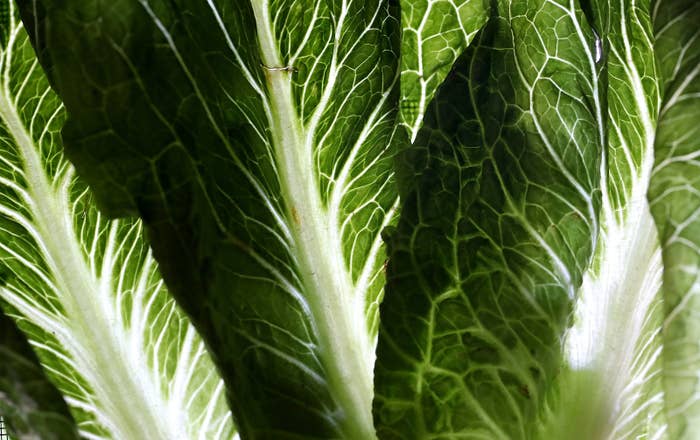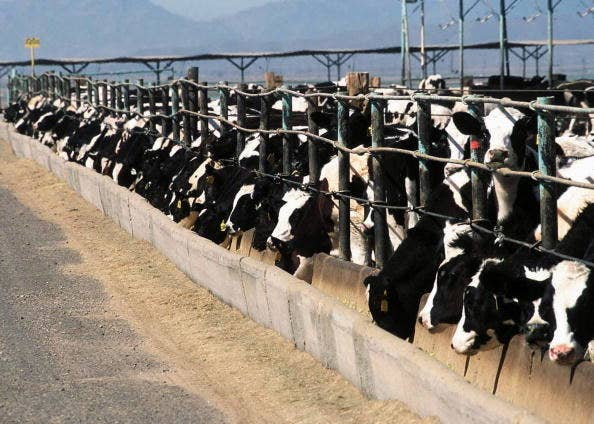The US Food and Drug Administration is considering a "hypothesis" about how 210 people in 36 states got E. coli from eating romaine lettuce earlier this year: cow poop contamination.

It was the biggest E. coli outbreak in the US in more than a decade, causing 96 hospitalizations and five deaths.
Canal water samples taken from the region in Yuma, Arizona, where the lettuce was grown, tested positive for the strain of E. coli involved in the outbreak. According to an update from the FDA this week, the agency is continuing "to consider that contaminated water coming into contact with produce, either through direct irrigation or other means, is a viable explanation for the pattern of contamination. But other hypotheses were discussed as well. FDA notes that the canal is close to a Concentrated Animal Feeding Operation (CAFO), a facility with a large number of cattle on the premises."
The cattle feeding operation "can hold in excess of 100,000 head of cattle at any one time, and the FDA traceback information showed a clustering of romaine lettuce farms nearby," the update stated.

The Centers for Disease Control and Prevention explains the E. coli–poop connection like this:
Infections start when you swallow STEC [Shiga toxin-producing E. coli]—in other words, when you get tiny (usually invisible) amounts of human or animal feces in your mouth. Unfortunately, this happens more often than we would like to think about. Exposures that result in illness include consumption of contaminated food, consumption of unpasteurized (raw) milk, consumption of water that has not been disinfected, contact with cattle, or contact with the feces of infected people. Some foods are considered to carry such a high risk of infection with E. coli O157 or another germ that health officials recommend that people avoid them completely. These foods include unpasteurized (raw) milk, unpasteurized apple cider, and soft cheeses made from raw milk. Sometimes the contact is pretty obvious (working with cows at a dairy or changing diapers, for example), but sometimes it is not (like eating an undercooked hamburger or a contaminated piece of lettuce). People have gotten infected by swallowing lake water while swimming, touching the environment in petting zoos and other animal exhibits, and by eating food prepared by people who did not wash their hands well after using the toilet. Almost everyone has some risk of infection.
No final conclusions have been made yet about the source of this year's E.coli outbreak. "Our experts continue to work on examining potential links between the CAFO, adjacent water, and geologic and other factors that may explain the contamination and its relationship to the outbreak," according to the FDA statement. "The agency is examining all possibilities, including that contamination may have occurred at any point along the growing, harvesting, packaging, and distribution chain before reaching consumers."
Food safety lawyer Bill Marler wrote in a blog post that the FDA still has not been transparent about what farms grew the romaine, where and who processed it, and who shipped it. "It's really nuts," Marler said in an email to BuzzFeed News.
The FDA did not immediately respond to a request for comment.
California and Arizona produce over 50 billion servings of leafy greens every year for US consumers, according to the California Department of Food and Agriculture. An industry group called the Leafy Greens Food Safety Task Force, comprising growers, government officials, trade associations, researchers, and consumer advocates, formed recently "to assess and address issues associated with recent foodborne illness outbreaks attributed to consumption of leafy greens."
